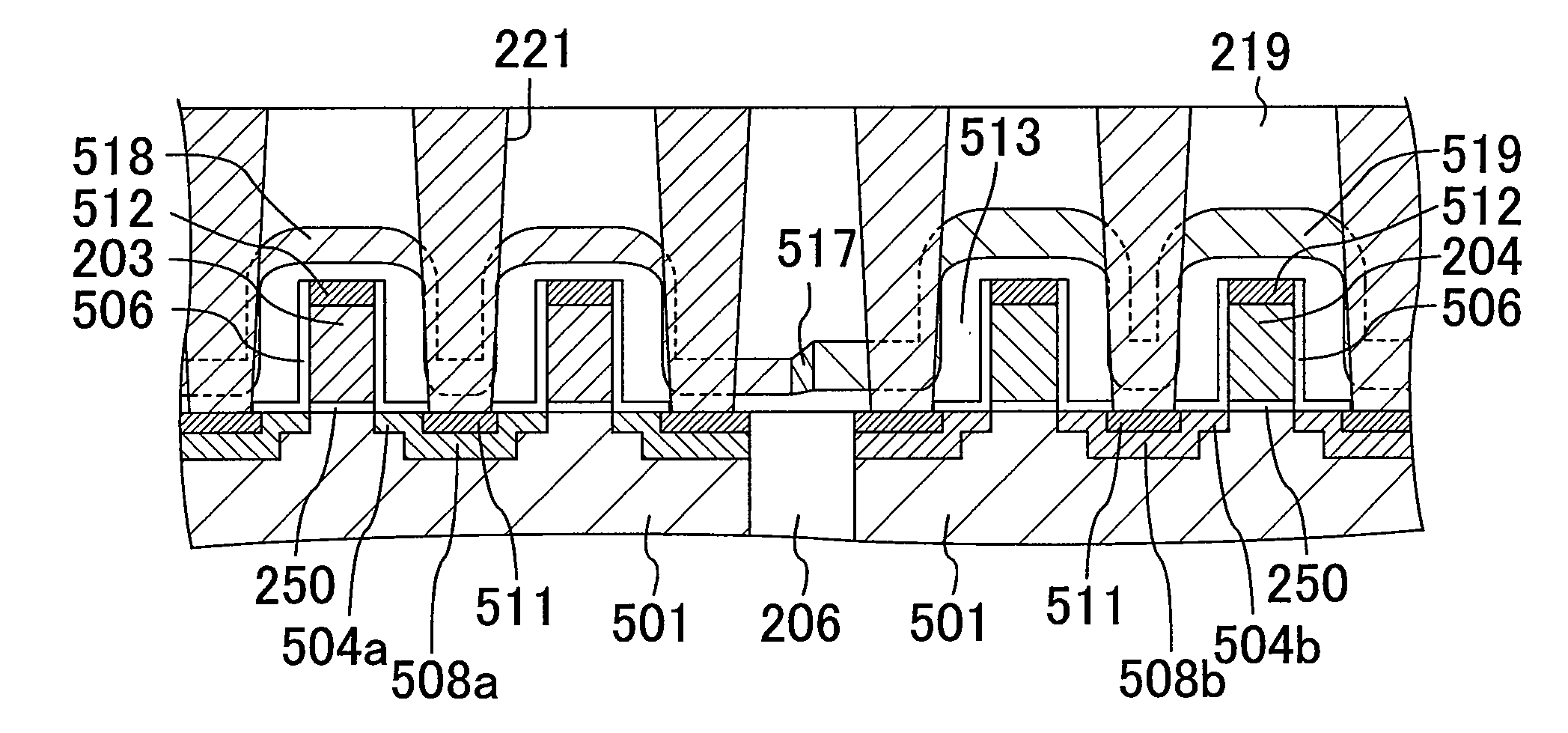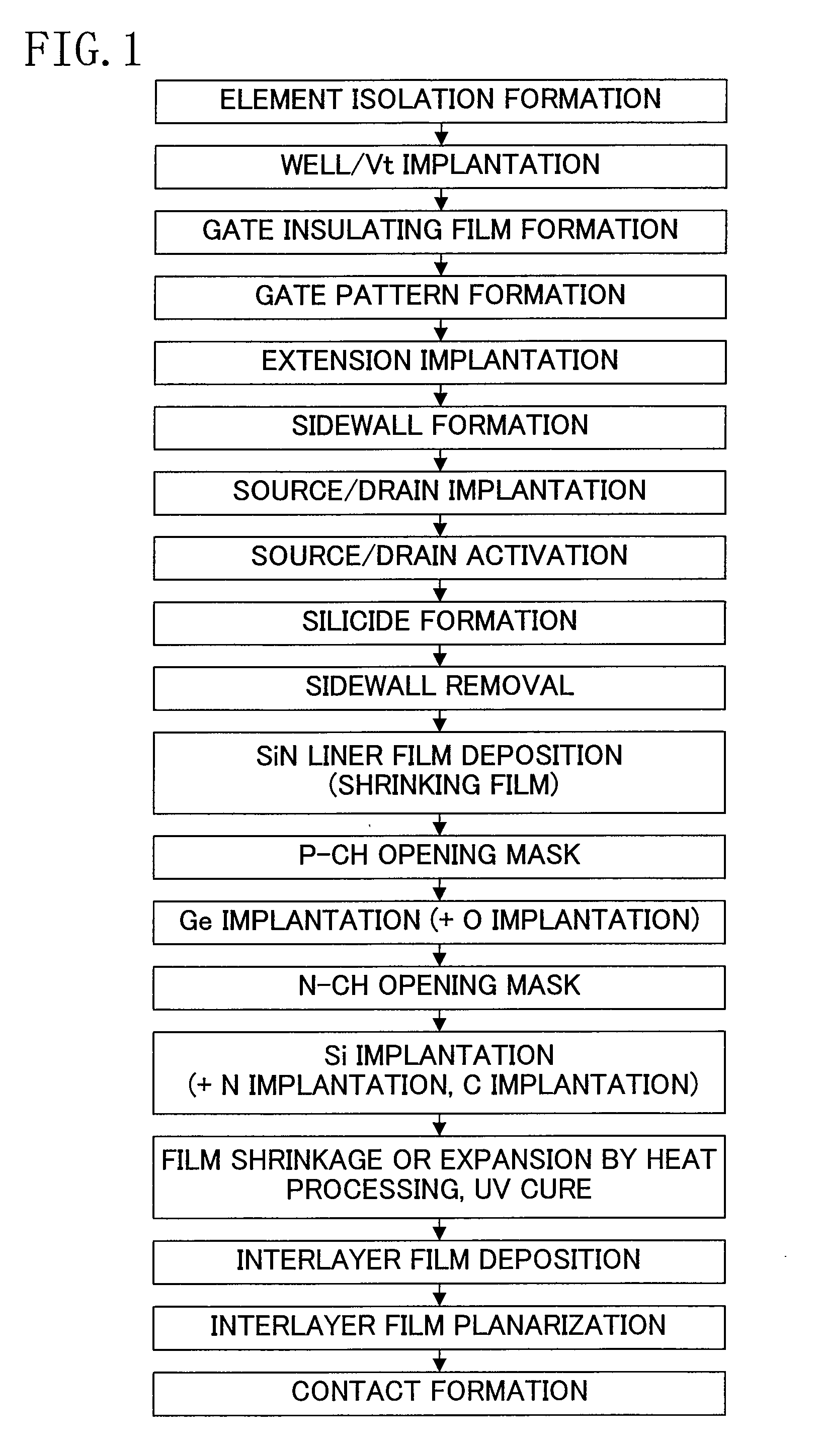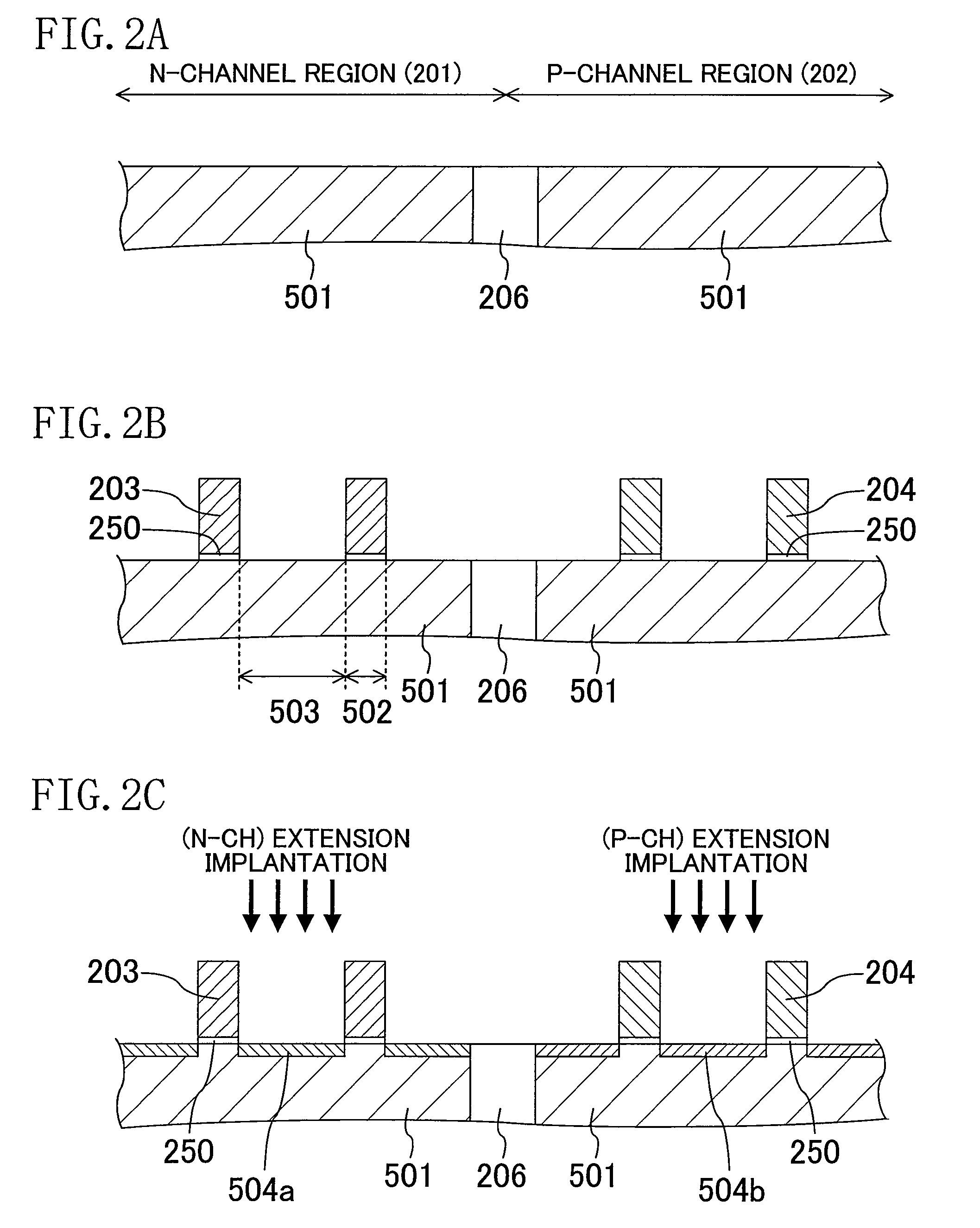[0024]The present invention is made to solve the above problems, and it is an object of the present invention to provide a semiconductor device capable of controlling a stress to be applied to a channel in an N-channel region and a channel in a P-channel region and capable of suppressing increase in area and reduction in yield, and a manufacturing method of such a semiconductor device.
[0026]In this structure, the n-channel contact liner has a shrinkage force and the p-channel contact liner has an expansion force. Accordingly, the channel of the n-channel field effect transistor is subjected to a tensile stress in the gate length direction and the channel of the p-channel field effect transistor is subjected to a compressive force in the gate length direction. The channel mobility can therefore be improved in both the n-channel field effect transistor and the p-channel field effect transistor without using a special material. Especially, since the n-channel contact liner and the p-channel contact liner are formed continuously with each other, the difference in level between the n-channel contact liner and the p-channel contact liner in the np boundary region can be reduced as compared to the conventional semiconductor device, whereby generation of voids can be suppressed. The semiconductor device of the present invention is therefore less likely to have problems such as short-circuit between wirings or between contacts, whereby the yield is improved. Moreover, the yield is not reduced even by forming the contact in the np boundary region, and the width of the np boundary region can be significantly reduced than in the conventional example. As a result, increase in chip area can be suppressed and the degree of freedom in design can be improved.
[0028]According to this method, ions of an element having an ionic radius equal to or larger than that of silicon are implanted to the insulating film in the N-channel region in the step (d) to break bonds between the constituent atoms of the insulating film. Since the heat treatment is performed after the bonds between the constituent atoms of the insulating film are broken, the constituent atoms re-bond with each other in a self-aligned manner so as to reduce the film potential, whereby shrinkage of the insulating film can be caused in the N-channel region. As a result, a tensile stress is applied to the channel of the n-channel field effect transistor in the gate length direction, whereby the mobility is improved. Regarding the insulating film in the P-channel region, on the other hand, the bonds between the constituent atoms of the insulating film are first broken in the step (e), and then ions of an element having a higher bonding energy with constituent atoms of the insulating film than that between the constituent atoms are implanted to the insulating film in the P-channel region in the step (f). Therefore, expansion of the insulating film can be caused in the P-channel region. As a result, a compressive force is applied to the channel of the p-channel field effect transistor in the gate length direction, whereby the mobility is improved. Moreover, since the n-channel contact liner and the p-channel contact liner are formed integrally in the manufacturing process, defects such as voids and slits are less likely to be generated in the np boundary region, and the width of the np boundary region can be reduced.
[0031]As has been described above, according to the manufacturing method of the semiconductor device of the present invention, the stress of the contact liner film can be adjusted for n-channel and p-channel after formation of the contact liner. Therefore, the contact liner can be made of one layer, and the contact liner has almost no difference in level in the np boundary region. Therefore, the possibility of increase in chip area and reduction in yield due to increase in the np boundary region is eliminated, and a high performance semiconductor device can be manufactured at low cost.
[0032]Moreover, ion implantation is performed to the contact liner after deposition of the contact liner, and the stress can be increased or reduced by causing shrinkage and expansion of the contact liner. Therefore, the stress to be applied to the channel can be appropriately adjusted according to the transistor type.
[0033]Moreover, there is no overlap of contact liners in the np boundary region. Accordingly, in the case where a silicide layer is formed under the contact liner, the silicide layer is less likely to be damaged in the step of etching the contact liner to form a contact. As a result, increase in silicide resistance is suppressed, whereby a semiconductor device manufactured by the method of the present invention is less likely to suffer from problems such as degradation in transistor characteristics and reduction in yield due to increase in contact resistance and the like.
 Login to View More
Login to View More  Login to View More
Login to View More 


